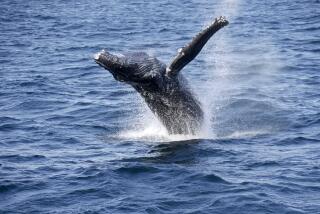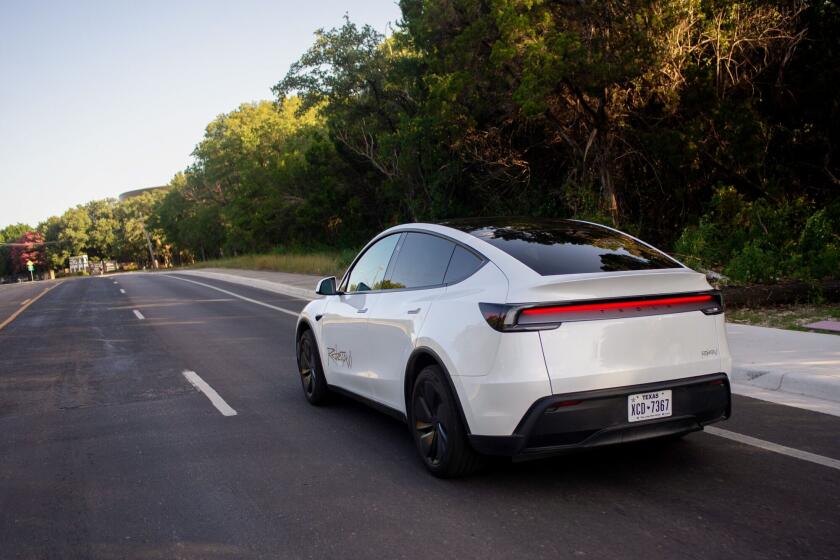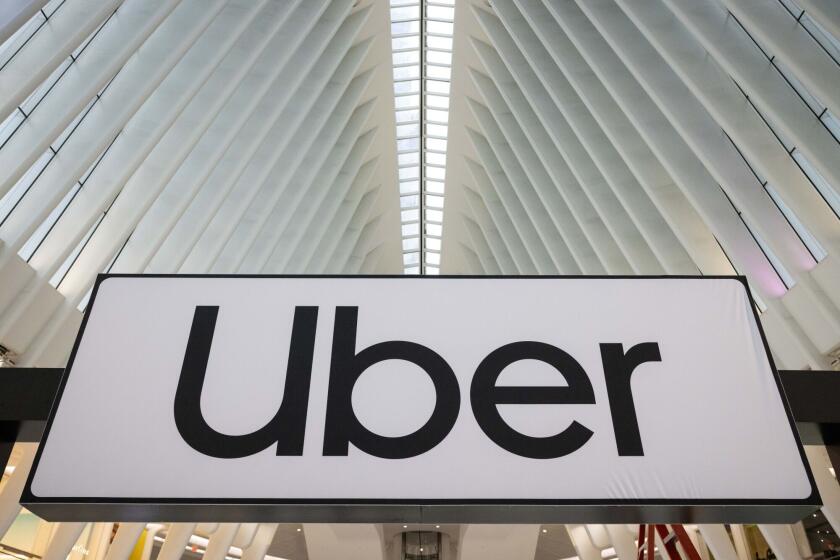New Environmental Analysis Sounds Alarm Among Ferry Enthusiasts
- Share via
WASHINGTON — John Durand loves his daily commute across Puget Sound, where ferryboats cut the crisp sea air and offer stunning views of Mt. Rainier, the Olympics and Seattle’s skyline.
“It can be absolutely gorgeous,” says Durand, 36. “It’s actually a nice way to get to work.”
But a study released in July discloses a darker side of the boats that carry millions of passengers in California, Washington state, Alaska and 32 other states.
Bluewater Network, a San Francisco-based environmental group, says ferries are 10 times more polluting per passenger than automobiles and nearly 13 times more polluting than buses.
The study has raised eyebrows among environmentalists and ferry buffs.
Many riders are aware of the black smoke that comes from ferry smokestacks but assume the vessels are good for the environment on the whole because they carry hundreds of people who otherwise might drive cars.
The study is “kind of earth-shaking,” said Dan Youra of Port Ludlow, Wash., who publishes a ferry guide and rides the boats frequently. “That’s going to have to be looked at very carefully. . . . It’s significant.”
The study highlights a trend among environmental groups, which are increasingly trying to focus public attention on the downside of nonconventional transportation modes such as Jet Skis, snowmobiles and all-terrain vehicles.
Ferries “may have gotten a free pass” as green groups focused on pollution resulting from cars and sport utility vehicles, said Eric Goldstein, a lawyer for the Natural Resources Defense Council in New York City. “Ferry engines may deserve scrutiny.”
The Environmental Protection Agency also has turned its regulatory eye on ferries and other commercial boats.
Under the 1990 Clean Air Act, the EPA is supposed to complete a rule in November that for the first time will regulate emissions from diesel-powered marine engines.
Ferries carry 100 million passengers each year in 35 states, according to the International Marine Transit Assn., a ferry group in Hingham, Mass.
Bridges and cars put many ferries out of business earlier this century, but the boats have been getting more popular in recent years due to gridlock, new waterfront developments and “fast ferries” that can travel more than 30 miles per hour, said Martha Reardon, secretary treasurer of the ferry group.
“There is very much of a revival,” she said. Additional ferry routes are planned or are under discussion in several states, including Michigan, Massachusetts, Connecticut and New York, Reardon said.
In Washington state, the boats are a necessity for many people who live on or visit islands in the state’s inland waters. About 26 million people ride ferries there each year, and ridership is increasing. The state approved five new boats and two new routes this year to help meet population growth west of Seattle across Puget Sound.
In San Francisco, which has six ferry routes, a business group has proposed an extensive expansion that would add 30 to 40 terminals and 120 high-speed, passenger-only ferries to carry people across area bays and waterways. The state Legislature is considering a bill to have a board draft a plan for such a system.
Bluewater Network conducted its study in response to the San Francisco proposal, said Russell Long, its executive director.
The group used emissions and ridership data for cars, buses and a popular ferry route to conclude that diesel buses emit pollutants of .63 gram per passenger mile, cars emit .80 gram per passenger mile and diesel ferries emit 7.90 grams per passenger mile.
The analysis was based on average passenger loads for cars, buses and the ferry route.
Long said that although he expected ferries to pollute more than buses or cars, he was shocked by the extent of the difference--and a little saddened.
“It’s a shame we have to deromanticize the ferry as a result of this,” he said. “They’re an elegant way to travel to and from work.”
Bluewater wants the Legislature to postpone the ferry proposal until next year and have the California Air Resources Board conduct a more comprehensive study of ferry emissions.
The EPA’s upcoming new rule, to take effect in 2006, would force ferries to cut their emissions. The rule would allow 7.2 grams per kilowatt-hour of exhaust emissions that contribute to ozone--down nearly 50% from the 13.3 grams per hour the engines currently emit, said Alan Stout, a mechanical engineer in the EPA’s Ann Arbor, Mich., office.
Long contends the EPA standard isn’t low enough and advocates a standard of between 1 and 2 grams per kilowatt hour.
Stout said that may not be possible with current diesel technology. “We’re not prepared to set a standard at that level,” he said.
Meanwhile, some ferry advocates question Bluewater’s conclusions and suggest the group wants to derail the Bay Area ferry project--a claim Long denies.
Russell Hancock, vice president of the business group promoting ferries, the Bay Area Council, said marine engines are dirty because it takes far more horsepower to move a ferry through choppy waters than it does to push a bus on wheels along a smooth road.
He contends that Bluewater overstated the size of some ferries in the San Francisco plan and understated the amount of time cars will spend gridlocked in coming years. Increasing traffic means cumulative car emissions will escalate, he said.
Some Washington state environmentalists were intrigued by the study but doubt it will affect the state’s well-used ferry network.
“It’s not an issue that has come up here,” said Doug Scott, communications director for the environmental group People for Puget Sound.
Ferries are a way of life, and a lifestyle choice, for many in western Washington.
Durand figures it would him take 2 1/2 to three hours to get to his job at RealNetworks Inc. if he drove his car from Bainbridge Island--which is connected to the Kitsap Peninsula by a bridge--to Seattle. It’s a 90-mile trip by road, around the south end of Puget Sound and then north through Tacoma. The ferry takes 47 minutes.
“If I don’t take a ferry,” he said, “I’ve got a real problem.”
More to Read
Sign up for Essential California
The most important California stories and recommendations in your inbox every morning.
You may occasionally receive promotional content from the Los Angeles Times.













